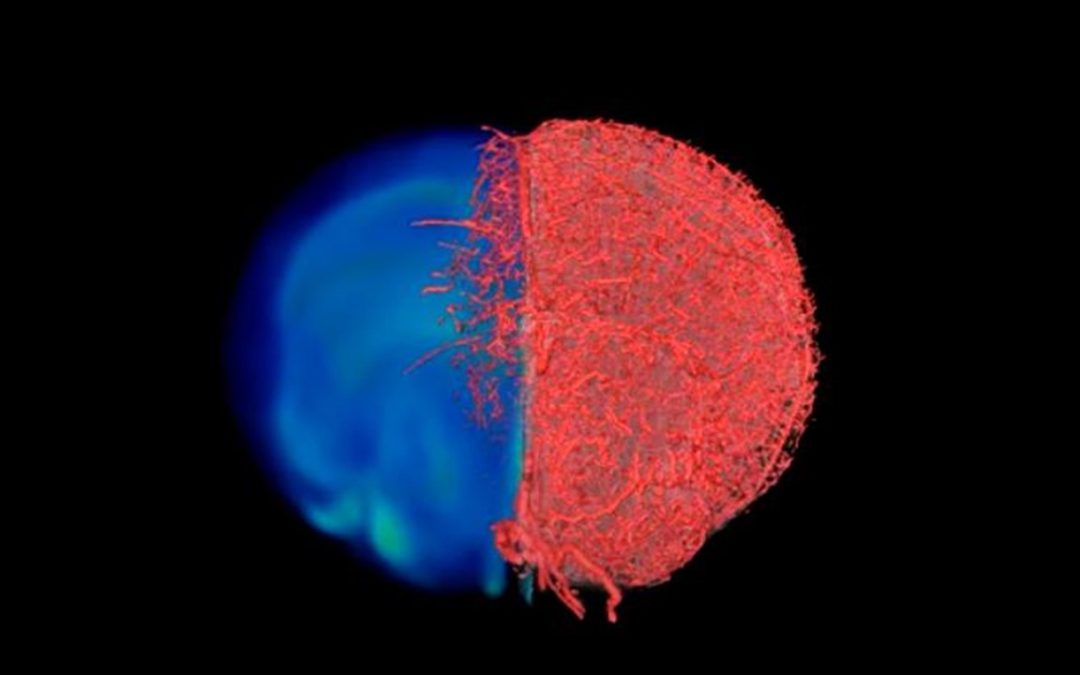When it comes to blood vessels and VascuViz, how can it help? The study, blood vessels, and connection to your health explained.
According to a February 10th report published in Nature Methods, researchers have developed a new imaging approach dubbed “VascuViz.” The method, which was tested in mouse tissues, makes blood vessels visible in multiple imaging techniques.
Researchers say that VascuViz can advance our understanding of the structures and functions of the body’s tissues. Moreover, it can enhance the study of the biology of diseases such as cancer and stroke.
According to Arvind Pathak, Ph.D., professor of radiology, biomedical and electrical engineering, and member of the Sidney Kimmel Comprehensive Cancer at the Johns Hopkins University School of Medicine, the current data gathering methods have room for improvement. “[Current methods] can be an expensive and time-consuming process that risks destroying the tissue’s architecture, precluding our ability to use the combined information in novel ways.”
VascuViz and Imaging Improvements
 While researchers currently use various imaging methods that work such as MRI, CT, and microscopy, integrating data remains a challenge. To make blood vessels visible during imaging, researchers use specific agents. However, while one agent can make them visible in one method, it can also make blood vessels invisible in another.
While researchers currently use various imaging methods that work such as MRI, CT, and microscopy, integrating data remains a challenge. To make blood vessels visible during imaging, researchers use specific agents. However, while one agent can make them visible in one method, it can also make blood vessels invisible in another.
Fortunately, VascuViz overcomes this challenge by making blood vessels visible in multiple imaging tools. As a result, researchers can develop a multilayer understanding of blood vessels in less time and with less effort. Furthermore, VascuViz can be particularly useful in creating computerized visualizations of complex biological systems like the circulatory system.
“Now, rather than using an approximation, we can more precisely estimate features like blood flow in actual blood vessels and combine it with complementary information, such as cell density,” says Akanksha Bhargava, Ph.D., a postdoctoral fellow in the Pathak Lab within the Department of Radiology and Radiological Science at the Johns Hopkins University School of Medicine.
To create VascuViz, Bhargava and researchers tested several imaging agents and their suitability for various imaging methods. They then tested it in a variety of mouse tissues and combined the resulting images to create 3D visualizations. Because of its affordability and commercially available components, Pathak and the team hope VascuViz becomes globally adopted.
The Outlook
 New technological advances like VascuViz help experts improve their care of circulatory conditions. However, there are current things you can do now to help improve your circulation like exercise, eating healthily, and taking supplements like L-arginine Plus.
New technological advances like VascuViz help experts improve their care of circulatory conditions. However, there are current things you can do now to help improve your circulation like exercise, eating healthily, and taking supplements like L-arginine Plus.
Its ingredients are effective at promoting circulation, blood pressure health, cholesterol health, and more. If you’re ready to give your blood vessels the support they deserve, then lead a healthy lifestyle and take L-arginine Plus.

